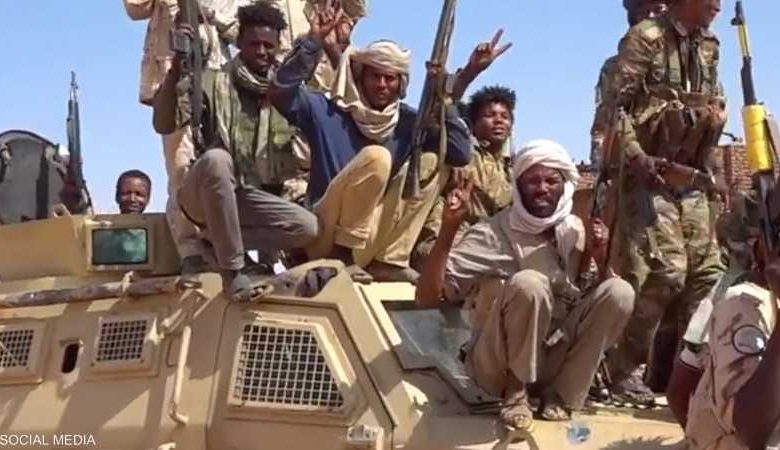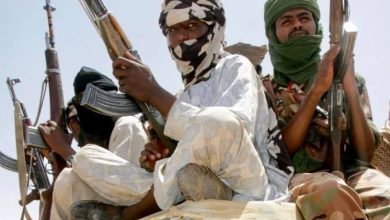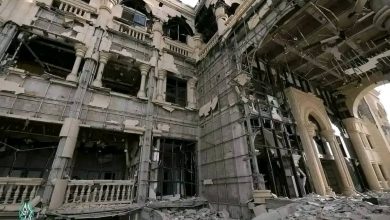Militia Military Bases in Khartoum… Weapons that Incriminate and Homes that Expose

Report by: Sabah Musa
After the Sudanese army secured all entry and exit points of the capital, Khartoum, the Rapid Support Forces (RSF) militia fled, abandoning their weapons and equipment. This debunks all claims suggesting that the militia left under a pre-arranged agreement with the armed forces or that they were merely repositioning themselves. Such narratives aim to downplay the military’s significant victory, mislead both local and international public opinion, and conceal the humiliating defeat suffered by the militia. Just days before, their leader, Mohamed Hamdan Dagalo “Hemedti,” had vowed that his forces would never leave Khartoum and declared the presidential palace a “red line,” as his followers bet on establishing their so-called government from within the capital and the presidential palace.
Shifting the Blame
The Janjaweed militia has repeatedly accused the Sudanese army of shelling civilians with artillery and airstrikes. However, media reports and camera footage have proven that the RSF used civilian homes as combat bases, including deploying heavy weaponry, and used civilians as human shields for two years since the conflict began on April 15, 2023.
U.S. Responsibility
At the same time, a Sudanese legal expert—who requested anonymity—provided a legal perspective on the liability of the United States and other countries supporting the militia for supplying weapons used in Sudan by the RSF. The legal expert, in an analysis obtained by Al-Muhaqiq, stated that the U.S. bears direct legal responsibility under international and U.S. laws governing arms exports, specifically the International Traffic in Arms Regulations (ITAR) and the Arms Export Control Act (AECA). These laws regulate the sale and transfer of U.S.-manufactured weapons. If it is proven that the U.S. sold these weapons to a third-party state without ensuring they would not reach non-state actors (such as militias), it could be held legally accountable for negligence or regulatory breaches.
Arms Supply Ban
The legal expert argued that such actions constitute violations of international humanitarian law and customary international law, which prohibit supplying non-state actors with weapons that could be used to violate the Geneva Conventions—especially if these arms were used against civilians or in the destruction of civilian infrastructure. He stated that lawsuits could be filed under international tort law in U.S. courts if there is evidence that the U.S. failed to properly monitor the end destination of these weapons. Additionally, legal action could be taken in U.S. federal courts against the government or manufacturers for negligence in the sale or oversight of these arms. He cited the Doe v. Unocal case as a precedent for challenging governmental or corporate complicity in human rights violations.
The UAE’s Accountability
The legal analysis also suggested that the United Arab Emirates (UAE) could be held responsible for supplying arms to militias in Sudan, making it a legal party in the case. If the UAE sold weapons to non-state armed groups, it would be in violation of the Arms Trade Treaty (ATT), which prohibits transferring arms to parties likely to commit serious human rights violations. The analysis noted that a complaint could be submitted to the UN Security Council or the International Court of Justice based on UN reports about arms supplies to warring factions in Sudan. Furthermore, the UAE could be named as a co-defendant in a U.S. lawsuit, invoking the principle of Joint Liability to prove its awareness that these weapons would be used unlawfully in Sudan. Legal proceedings could also be pursued through European courts or UN committees to hold the UAE accountable for fueling the armed conflict in Sudan.
Proposed Legal Steps
The legal expert outlined several recommended actions:
1. Compiling a legal case with evidence, including documents, photos, and videos proving the presence of U.S.-made weapons in Sudan.
2. Requesting a UN investigation into the source and transfer of these weapons.
3. Filing lawsuits in U.S. courts against the U.S. government and arms manufacturers, based on relevant domestic and international laws.
4. Petitioning the International Criminal Court (ICC) if there is evidence that these weapons were used in war crimes, allowing for legal action against those involved.
5. Launching a diplomatic and media campaign to expose the arms supply issue and demand reparations for Sudan.
Militias Using Homes as Military Bases
Sudanese Armed Forces (SAF) spokesperson Brigadier General Nabil Abdullah confirmed that the fleeing RSF left behind a substantial amount of weaponry. Speaking to Al-Muhaqiq, he detailed the abandoned arms, including artillery, machine guns, and various other weapons—ranging from light to heavy weaponry. He revealed that caches of drone munitions were found in basement storage areas of residential buildings in Khartoum. The military also discovered artillery pieces hidden inside civilian homes, proving that the RSF used residential properties as military bases while using civilians as human shields. The weapons recovered were of various origins, and the militia did not acquire them through state-level imports. Abdullah emphasized that civilians in Khartoum, after the militia’s expulsion, could attest to the RSF’s use of these weapons to shell neighborhoods from within residential areas.
Advanced Weaponry
Security and military expert Dr. Amin Ismail Majzoub noted that the RSF had received highly advanced weaponry compared to the arms they initially possessed at the start of the war. He explained that when the RSF was still part of the Sudanese army, they were armed mainly with four-wheel-drive vehicles equipped with machine guns, RPGs, and small arms. However, during the conflict, they acquired heavy weaponry, including advanced U.S.-made missiles, sniper rifles, 105mm and 150mm field artillery, and rocket launchers. These included single- and dual-barrel launchers mounted on vehicles.
Unmasking the Truth
Majzoub added that after the RSF fled Khartoum, a large cache of weapons was found, including advanced American-made armored vehicles used in combat operations. The military also discovered modern jamming systems used to disrupt aviation signals, as well as drone guidance platforms, which differed from jamming devices as they were used to direct militia drones. Additionally, heavily equipped vehicles belonging to field commanders were recovered. He stressed that these weapons were smuggled into Sudan through regional countries via airports and military bases, primarily western-manufactured arms, with a significant portion coming from the United States.
He highlighted the need to scrutinize the countries with direct ties to the U.S., which facilitated the transfer of these weapons to Sudan’s neighboring countries before being transported by land to Darfur and eventually to Khartoum.
Majzoub further explained that the RSF fired its artillery from civilian homes to conceal their positions, leading to mass casualties in markets, mosques, schools, and other civilian areas. He refuted claims that the Sudanese air force targeted civilians, stating that the army’s airstrikes were aimed at militia weapons caches, not civilian residences.
He concluded by analyzing the RSF’s defeat, attributing it to:
Cut-off supply lines after being encircled.
Lack of central command and the disappearance of key field commanders.
Low morale, especially among tribal fighters, who could not sustain prolonged combat away from their communities.
Defection and surrender of RSF-affiliated local collaborators and foreign mercenaries.
Majzoub reaffirmed that international and regional entities are now fully aware of the RSF’s tactics and false propaganda, which sought to blame the Sudanese army for civilian casualties caused by the militia’s actions.



